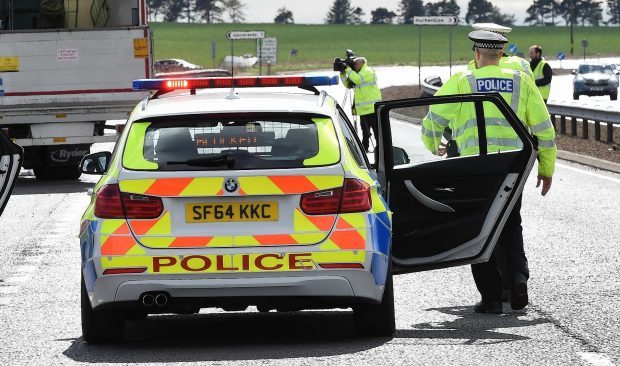For the families of those involved, serious road collisions and crashes can be events of unthinkable tragedy.
But, for a small team of highly-trained police officers, they are forensic incidents which need to be analysed, reconstructed and understood in every detail.
If a fatal or life-changing crash happens anywhere in the north of Scotland, specialist collision investigators are tasked with piecing together exactly what sparked the incident.
Most of these individuals work across road policing – but, for Constable Lewis MacDonald, it is a full time job.
Based in Dingwall, he can be called anywhere in the Highlands and Islands where there has been a serious collision.
Work to study what has happened begins almost immediately – even as other first responders, such as ambulance crews and the fire service, remain at the scene.
A key part of a collision investigator’s role is to remain detached from everything but the evidence of the crash scene that can be measured and studied.
It is complex job which requires candidates to take extensive training and have a better grasp of applied physics than an average policing role.
Constable MacDonald said: “Our role is specifically in regards to any physical evidence at the scene, vehicles at the scene, debris and any casualties that may be there.
“We record what we can and there are various ways and means we use to do that. Initially, what we’ll do when we attend is walk the scene to establish the size of it.
“There may be more than one vehicle and vehicles may be inaccessible. They may be submerged in water, for example, there could be fire damage or other hazards associated with it, such as loads on commercial vehicles, or chemical loads.
“When we establish how big the scene is, we’re looking for any marks on the road, gouges, debris and how far that’s been thrown, and tyre marks.
“We then have to decide whether or not we can attribute these marks and gouges to that specific collision.”
Officers will subsequently build up a highly detailed picture of a crash scene by taking photographs and scanning scenes, using powerful equipment which can recreate an area to the most minute detail.
A key part of that is keeping a scene as untouched as possible to allow investigators to understand what happened.
Constable MacDonald confirmed that the bulk of their work cannot happen until other emergency services have finished at the scene.
He said: “That means we are getting a more sterile scene, which is ideally our best-case scenario, because fire engines and ambulances could be covering things that are of interest to us.
“They may not realise that and, of course, their duty and priority is to preserve life and, potentially, save lives.
“Once we have a sterile scene, we photograph it, then record it with the laser scanner which allows us to capture the scene relatively quickly.”
Police also carry out physical studies, including performing skid tests in vans, using equipment to take measurements from the road surface.
It is important to carry out tests such as this quickly after the crash in case conditions change.
How long a crash scene is kept closed is different in every case – depending on where it occurred and the circumstances of the collision.
Factors apart from the collision investigation also play their part, including the initial rescue of casualties and any repairs which might be required to the road.
Constable MacDonald said he understood why the process sometimes led to public frustration.
He added: “By the nature of our job, we are on the road all the time and we know people drive long distances, particularly in the Highlands.”










